Visual discrimination Geometry Worksheets for Ages 5-6
8 filtered results
-
From - To
Enhance your child's learning experience with our engaging Visual Discrimination Geometry Worksheets designed for ages 5-6! These printable worksheets focus on developing essential visual skills needed for geometry. Children will practice distinguishing shapes, identifying similarities and differences, and honing observation skills through interactive and colorful activities. Perfect for both classroom and home use, these worksheets make geometry fun and accessible, setting a strong foundation for future math success. Foster your child’s critical thinking and visual awareness while they explore various geometric concepts through hands-on practice. Download today and watch their confidence in geometry grow!
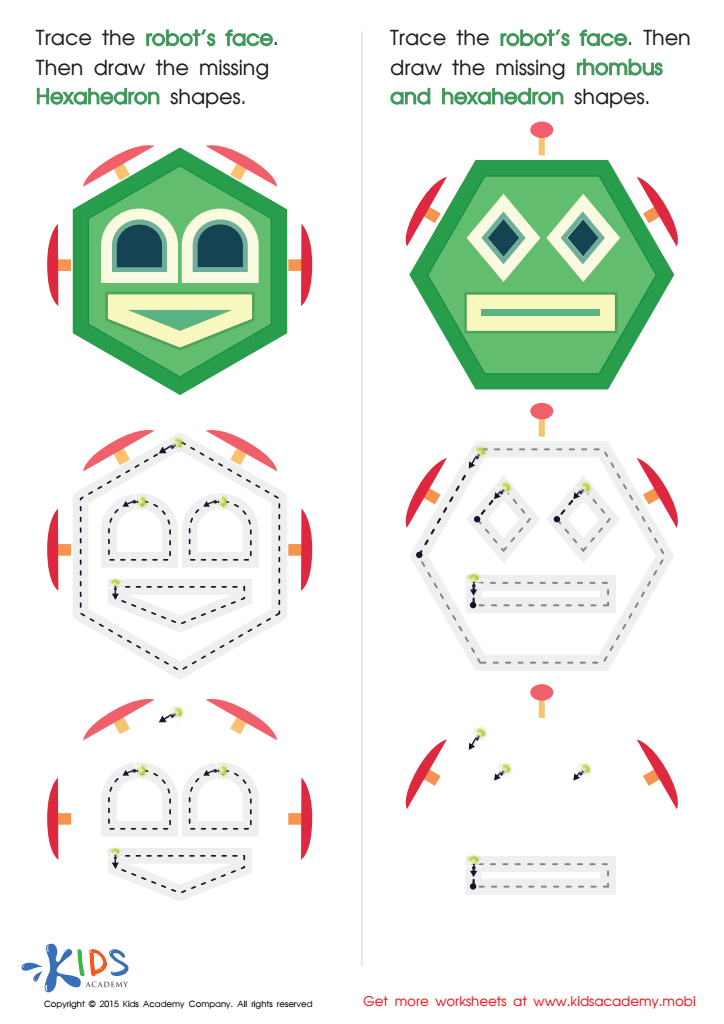

Practice Drawing Hexahedrons And a Rhombus Worksheet
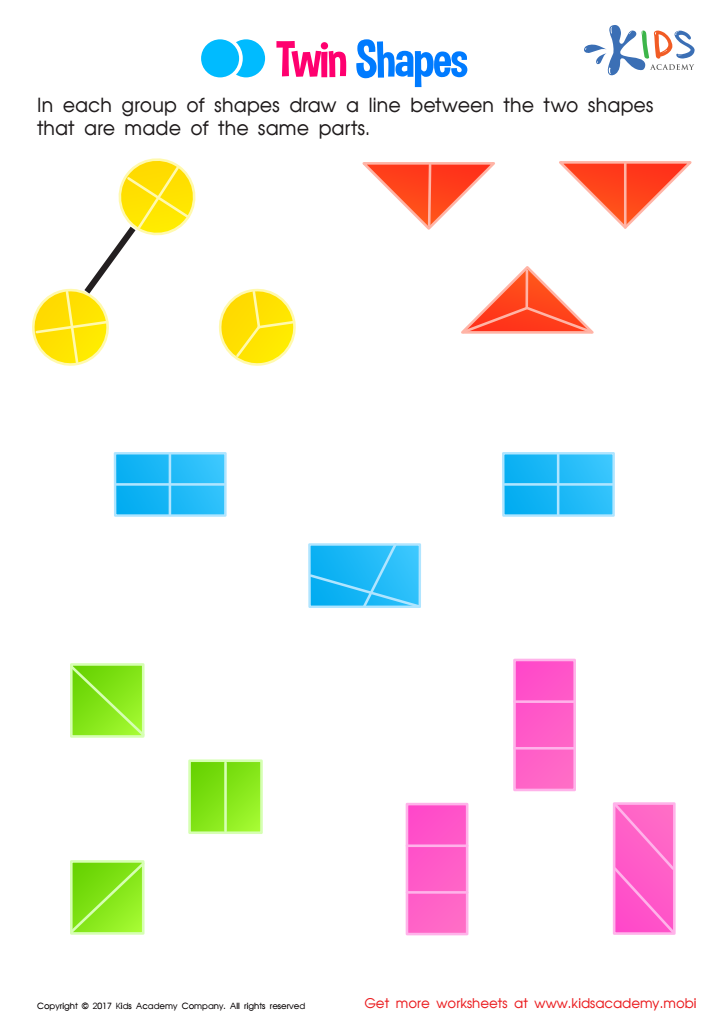

Twin Shapes Worksheet
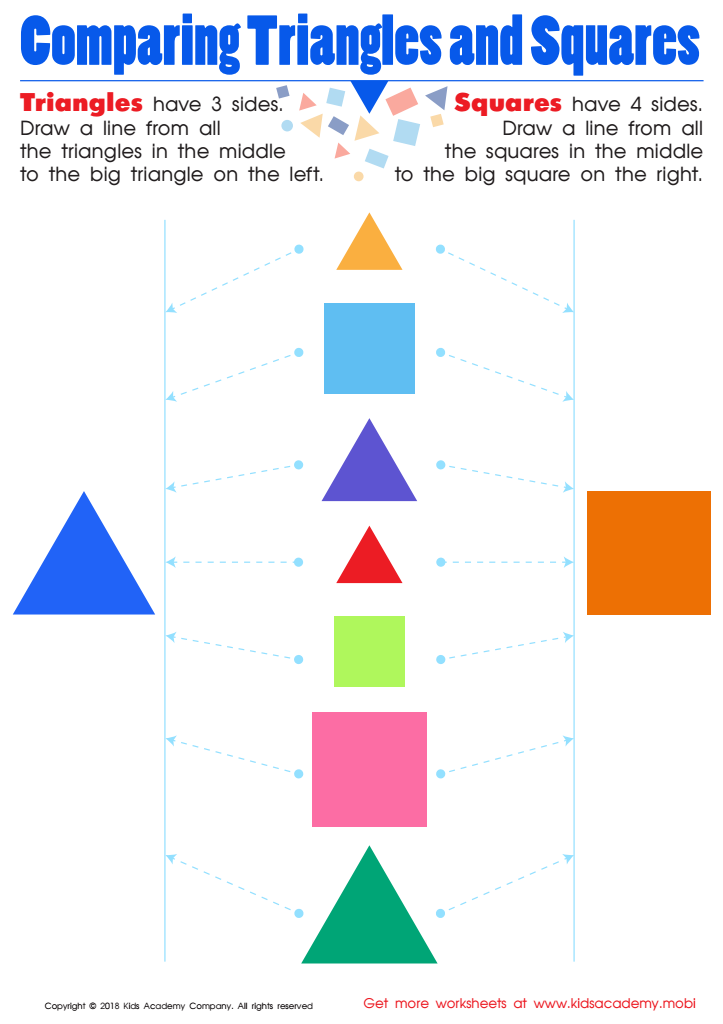

Comparing Triangles Squares Worksheet


Animal Shadows Sorting Worksheet
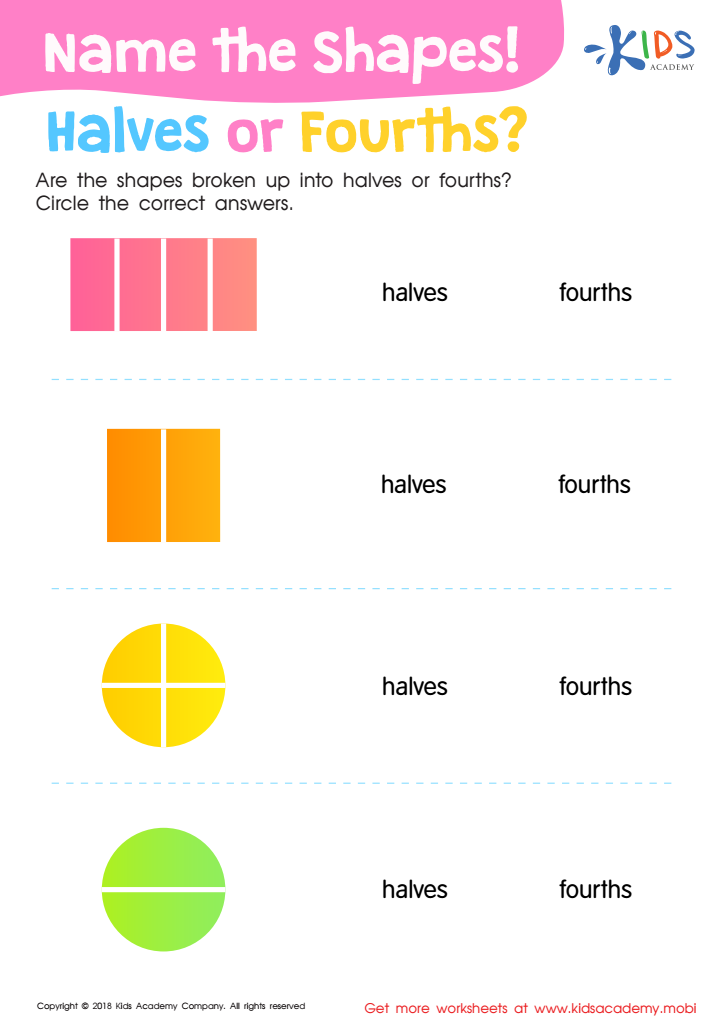

Name the Shapes Halves or Fourths? Worksheet
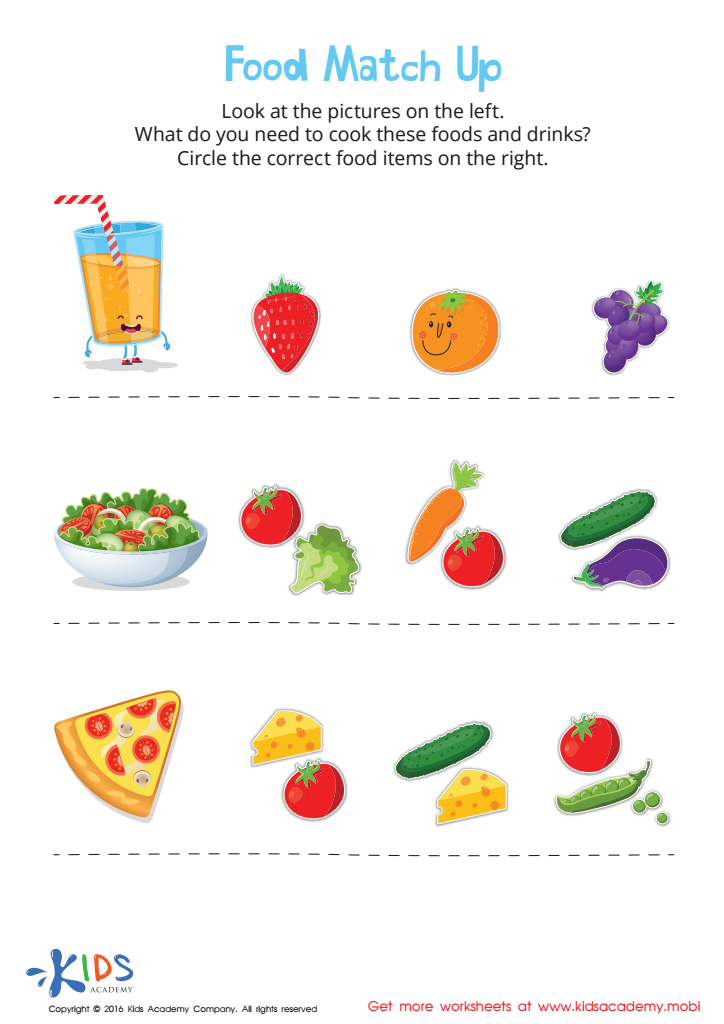

Food Match Up Worksheet
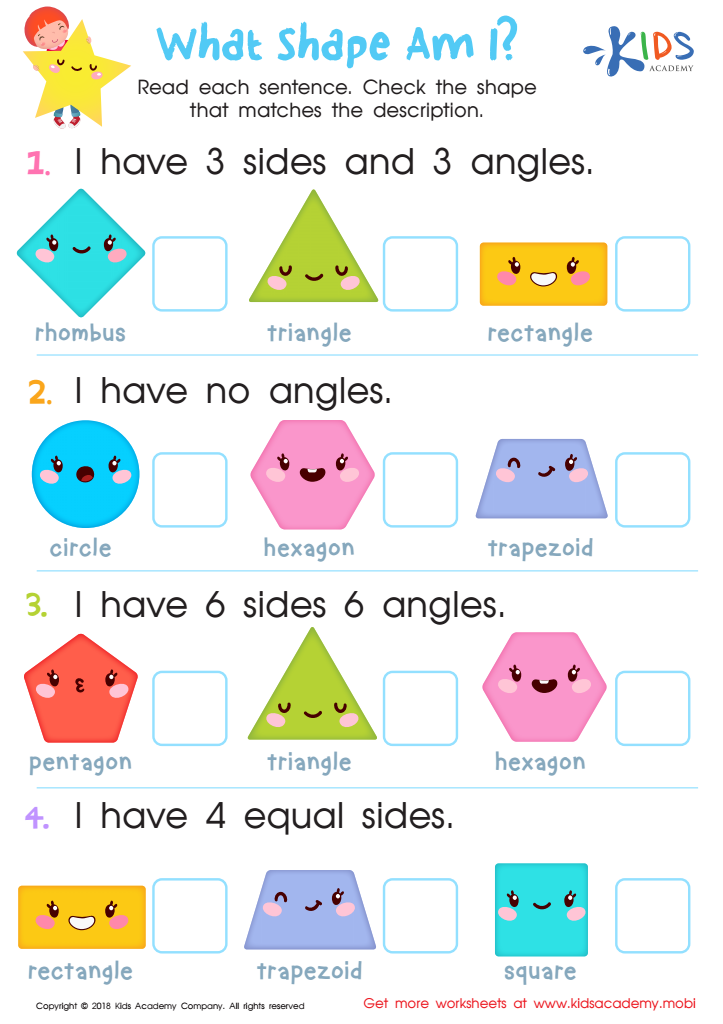

What Shape Am I? Worksheet
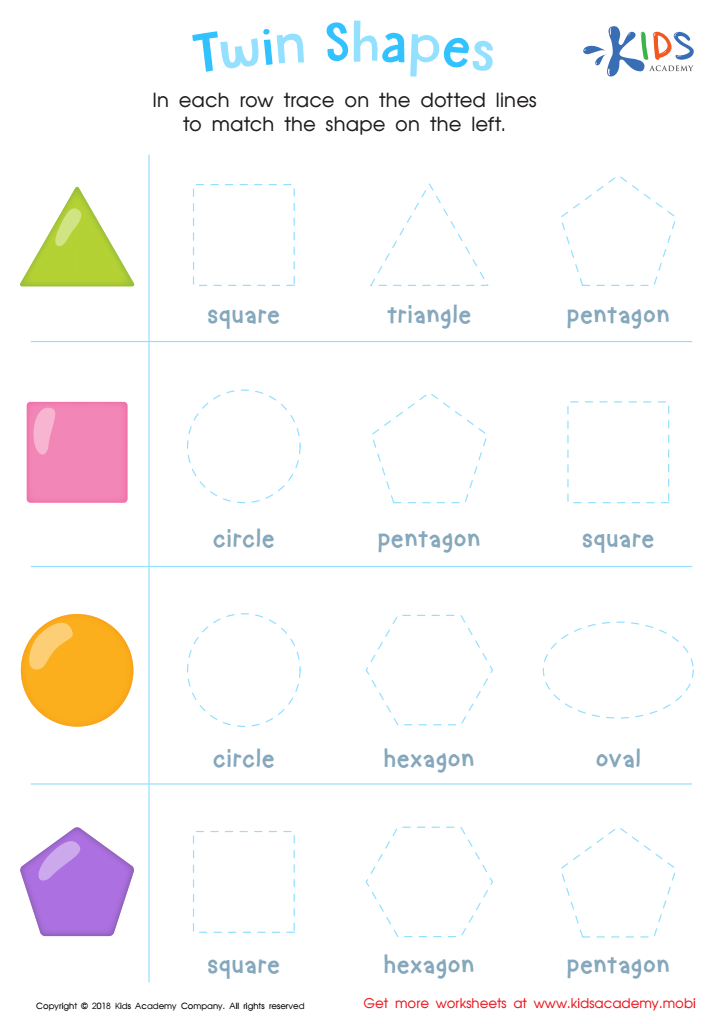

Twin Shapes Dot-to-Dot Worksheet
Visual discrimination skills are essential for children ages 5-6 as they form the foundation for understanding geometry and spatial awareness. During this developmental stage, children are learning to perceive, identify, and differentiate between shapes, sizes, and orientations of objects, which are crucial components of geometry. Developing these skills enhances critical cognitive functions, such as problem-solving and analytical thinking.
Parents and teachers should care about promoting visual discrimination in geometry, as it supports early math skills. By recognizing patterns, shapes, and spatial relationships, children can more easily grasp concepts like symmetry, congruence, and even basic measurement. For instance, understanding the difference between a square and a rectangle helps them in their future encounters with geometry and builds the groundwork for more advanced mathematics.
Additionally, visual discrimination fosters creativity and fine motor skills through activities like drawing, puzzle-solving, and crafting. Engaging in these activities not only makes learning enjoyable but also promotes confidence in their abilities, encouraging a positive attitude towards math. Ultimately, nurturing visual discrimination at this age primes children for future academic success and aids in their overall cognitive development, facilitating their transition into more complex mathematical concepts as they progress through school.
 Assign to My Students
Assign to My Students
































